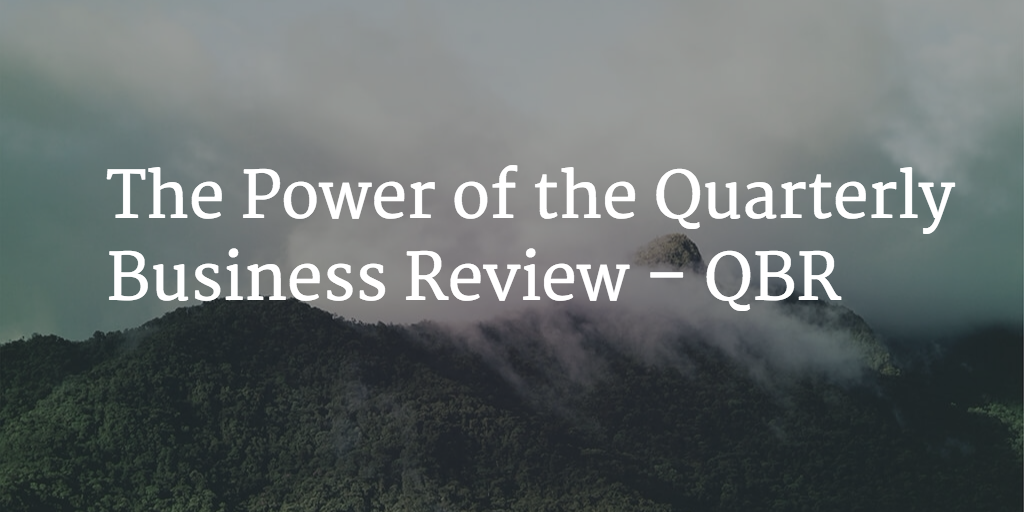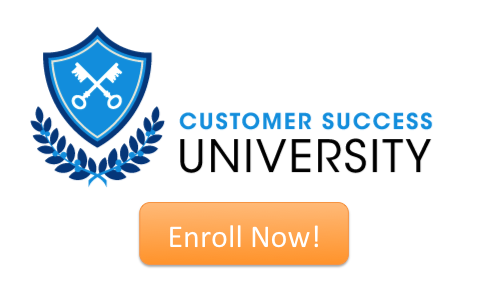UPDATE: What your client’s executive team thinks of your product or service carries a lot of weight, and QBRs are the perfect time to show exactly how big of an impact you’ve had on their business. Learn how to get your client’s executive team at your next QBR in this blog post, 5 Ways to Increase Executive Attendance at QBRs.
One of the most important activities your Customer Success Managers (CSMs) will perform is the Quarterly Business Review (QBR).
QBRs are sometimes known by different names – Business Reviews or Executive Business Reviews – but no matter what they’re called, they’re incredibly important and the agenda and flow are largely going to fall on the CSM, so it’s critical to help them prepare for, and perform QBRs, the right way.
Executive Involvement
For your QBRs to be the most effective, you will want to have executives on both sides in attendance. This is one of the best reasons to create an executive sponsorship program, at least for your key accounts.
The QBR will be one of the key points of participation for your executive sponsor, so participation of an executive on your side will generally make it easier to get the sponsoring executive on the customer’s side to attend as well.
QBRs are Strategic, not Tactical
A QBR should be a strategic event, not a tactical one. This is not the time to discuss the details of a particular issue or how you are going to train the new admin. Those kinds of meetings can happen without executives in the room.
The kinds of topics that are appropriate for a QBR might include:
- Return on Investment (ROI) in your product
- Expansion of the value proposition from their perspective
- Additional use cases they’re exploring or you’ve noticed
- Phase 2 (or 3 or 4) of the implementation
- New products or features they might be interested in
- Results from the previous 90 days
- Major roadblocks or obstacles to success (and how to get back on track)
Customer Segmentation is Critical
QBRs are usually reserved for your most critical clients. The preparation can be time consuming and, with a large number of customers, it probably does not make sense to try to do them for every customer.
If you recall the discussion around segmenting your customers, QBRs will likely be reserved for only the top segment of your customer base. These are the customers who need, and deserve, the special attention from you and from your company. They are often your best references and also represent the greatest growth opportunities. Good reasons to review the business quarterly and make sure you are in sync.
Business Review Frequency
The inside joke in Customer Success Management circles is “how often do you perform your Quarterly Business Reviews?” suggesting that, while the name implies “quarterly” or 4x per year, the reality is that they simply don’t happen as often or on a reliable cadence.
But all joking aside, and while the timing may vary depending upon your customers, the complexity of your relationship, etc., as the name implies, one of the intentions of a QBR is to review the previous quarter’s results. If done regularly, the output of a QBR should include the stated goals for the next 90 days with the intention of reviewing and comparing results against those goals at the next QBR. So the starting point for preparing for a QBR is to review and assess the goals and results for the past quarter.
Success Milestones and Agreement
The selfish goal of a QBR from your perspective is to move the customer in the direction you desire. If you are a company that has renewal events (i.e. not monthly auto-renews, but generally annual or bi-annual contracts that need to be manually reviewed, often requiring a new contract with new signatures to be executed), successful QBRs should lead to the renewal being a non-event.
Here’s why. If you discuss ROI for example, you should expect that the results will exceed the goals and, after a year of success, you should have definitive proof of the value of your product. And if those results are reviewed every quarter with the customer executive, that should leave no doubt in her mind about executing the renewal, too.
In other words, depending on the timing of your renewal, you will have had 3 or 4 meetings with the customer – QBR – where they agree that they’re achieving success with your product, making the renewal event, again, simply a non-event. It will just happen.
Strategic Account Planning
One thing you should have for every strategic customer is an account plan. An account plan will usually outline the strategic goals for a given customer. It might talk about the opportunity to roll your product out to additional groups or divisions for example. Those kinds of goals will translate to your QBRs and that executive meeting is a great opportunity to move the customer in the direction you desire.
In addition to the aforementioned topics, there are some specific elements of a QBR that may become a standard part of your delivery:
- Support review
- How many cases were opened and closed
- Breakout by type and severity
- Average time to resolution
- Any currently outstanding
- Health scorecard
- Overall health score
- Scorecard methodology and results
- Health score trends
- Lifecycle stage
- Where is the customer today
- Where were they 90 and 180 days ago
- What will it take to get to the next stage
- Benchmarking
- How does this customer compare to others
- Where are they falling short and what needs to happen to get them up to, or past, the benchmark
- Product usage
- What does usage look like along with trends
- Which features are being used, which aren’t
- Most active users
- License deployment and value received
QBR Template and Systems
Ultimately, you will want to create a QBR template which you follow for every Quarterly Business Review (or you can use Success Snapshots within Gainsight), with some room for personalizing it for each customer. Or you can start with our QBR template (download the Powerpoint here):
Some of the same reports can be used in every QBR, with the data obviously specific to the particular customer. But don’t make it 100% cookie cutter. So even with a QBR template, leave room to insert some very specific elements that will make this customer feel like they are getting the individual attention they deserve.
Don’t forget that part of the reason for doing QBRs is to make the customer feel special. To make them feel like they are part of your family. One of the best ways to do that is to put your cards on the table and share with them some things that are not shared with every customer. Product roadmap is a great example. Customers always want to know what’s coming next. It reinforces that you are the right partner thinking ahead for them, and that you are innovating on their behalf.
You can help cement the relationship by opening up in this way. And because your strategic customers are often the ones pushing the envelope and are perhaps the most demanding, this is also a great opportunity to solicit feedback, both on how the process is working today but also what’s coming in the future.
All-in-all, the QBR is a tremendous opportunity to strengthen your relationship with your customer. If done well, it can be equal parts aspiration and inspiration. Most customers truly want to be great customers. They would love to have the highest health score (aspiration) and are excited to be part of the innovation you are bringing to the marketplace (inspiration). For more information on the QBR checkout Allison Picken’s article, The Essential Guide to Quarterly Business Reviews .
It’s your job to prepare properly, deliver above their expectations, and use your QBRs to transform the relationship and turn your customers into true partners.
The best way to ensure you have high-performing Customer Success Managers that fully understand the power of Quarterly Business Reviews – QBRs – and know how to prepare and manage them, is to enroll them in Customer Success University now.
EDITED: This post previously contained a phrase that’s not reflective of Gainsight’s values. It’s been removed and we’re sincerely sorry we ever used it.


